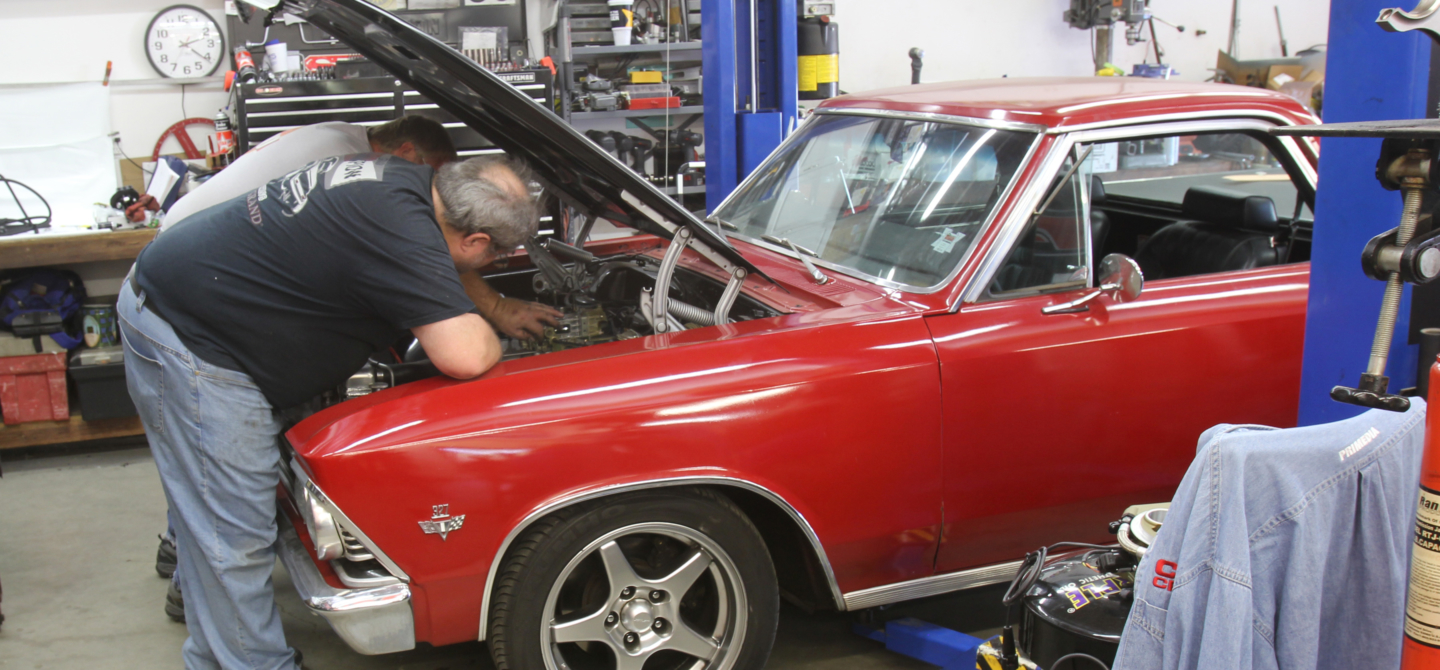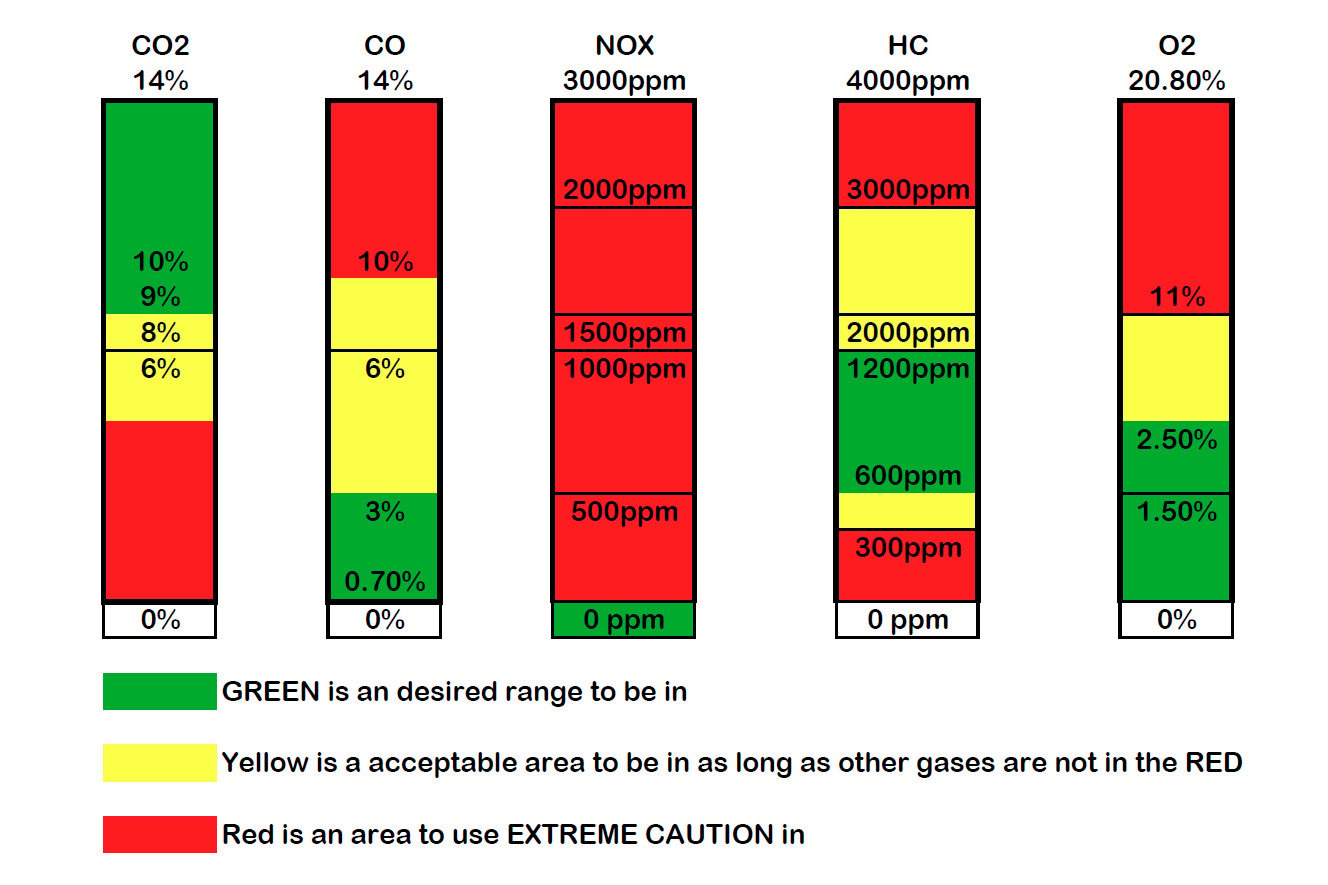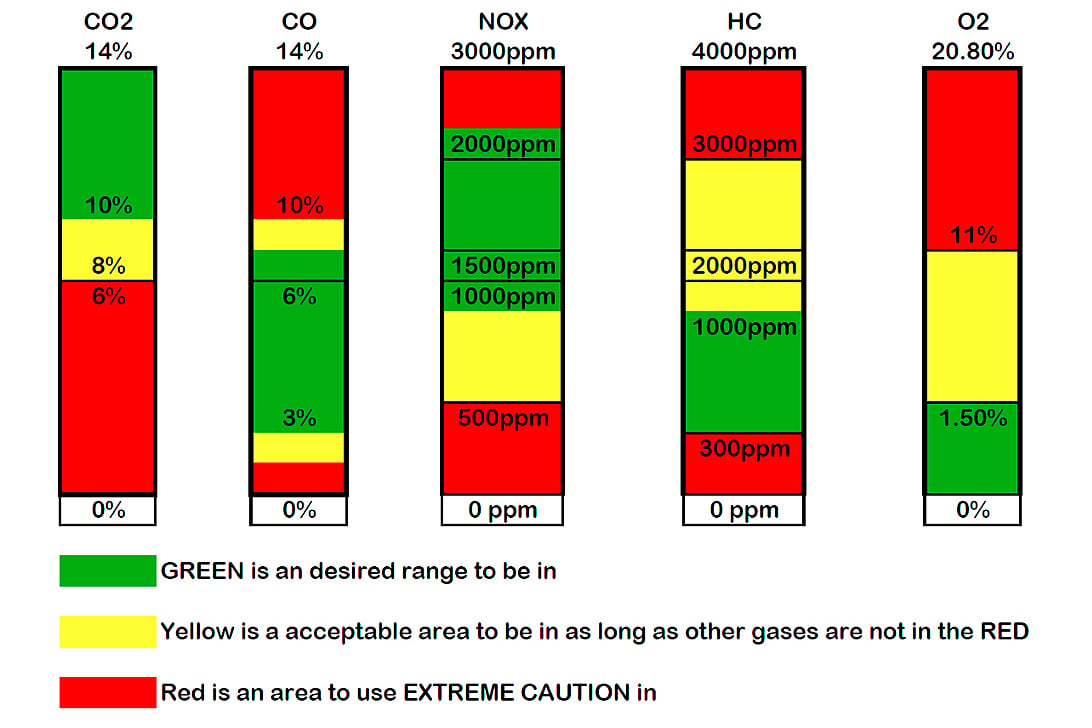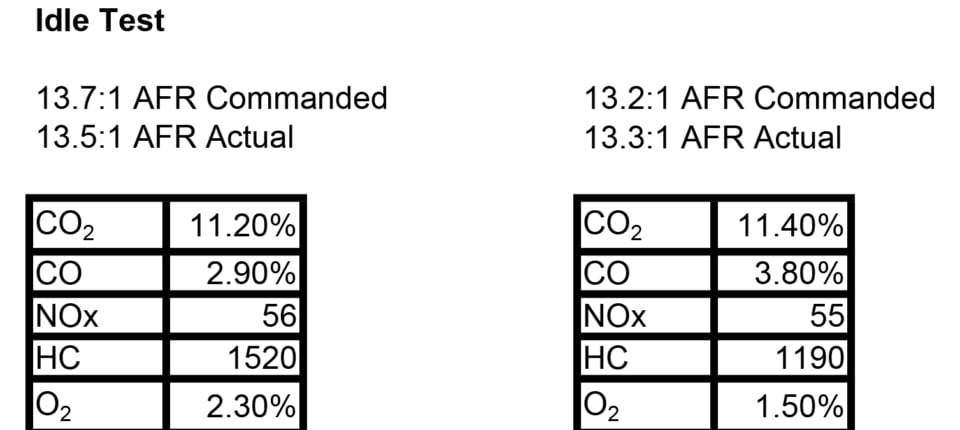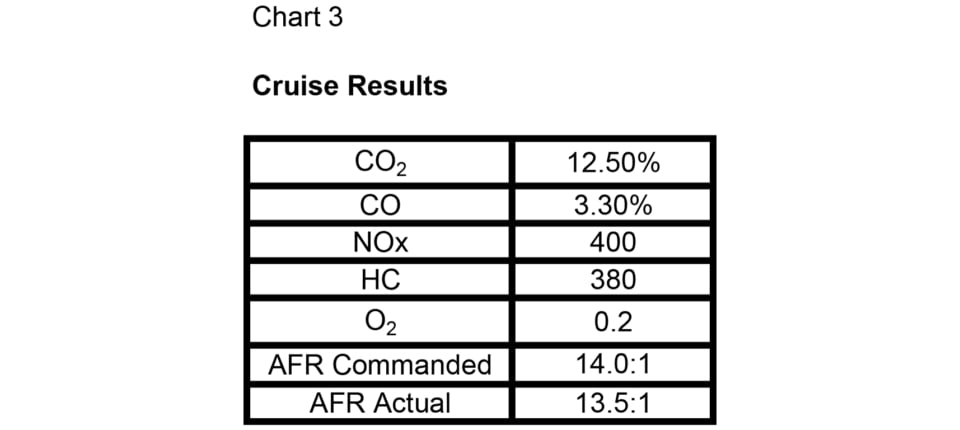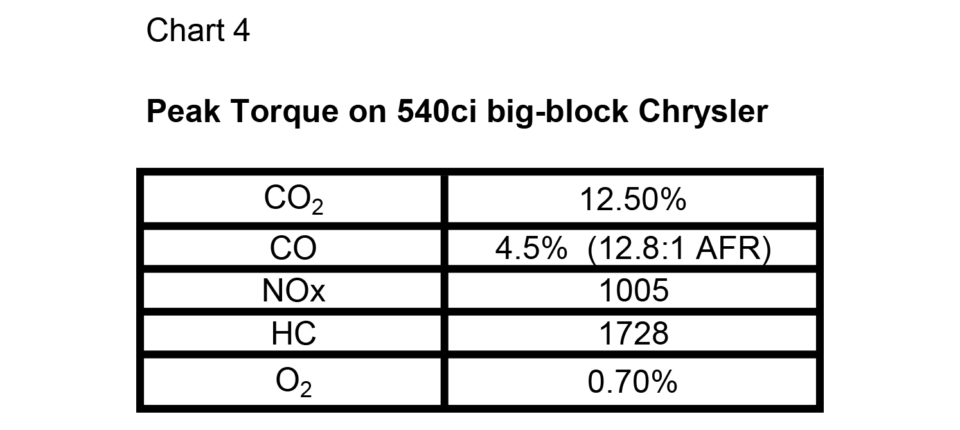We have a new tuning tool and can’t stop playing with it. In Sniff Test Part I, we discussed what each exhaust gas component represented as its individual part of the combustion process. This may sound like hyperbole, but using a five-gas analyzer should be the next big step in engine tuning. The only thing that might be better than looking at the collective exhaust would be using a five-gas analyzer on each cylinder.
We understand that not everybody can afford to drop serious coin on an EMS five-gas machine, so save the poison emails – we get it. However, that doesn’t change the fact that this kind of detailed combustion analysis is important to understanding how gasoline and air are converted to power. Let’s put it this way: if you’re looking for a shop that has a chassis or engine dyno and they have a five-gas analyzer and know how to interpret the results, those are the guys you want on your team.
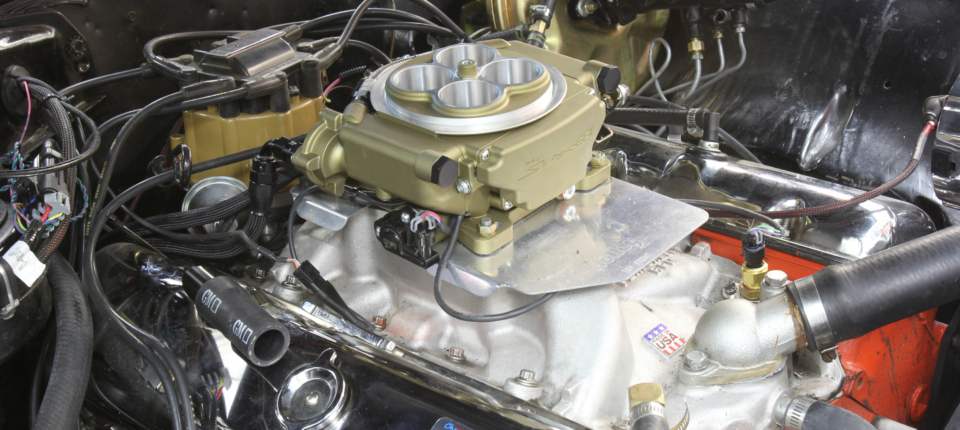
The engine in our first series of tests was this 468ci big-block with Holley Sniper EFI, ported iron 049 oval heads, 10.4:1 static compression, and a healthy Comp 286 hydraulic roller camshaft with 0.510-/0.520-inch lift and 230/236 degrees of duration. On the engine dyno with a carburetor this engine made 525 horsepower and 580 lb-ft of torque.
This is 21st Century tuning. The information we’ve gleaned from our short introduction to this EMS machine has been nothing less than eye-opening. Don’t think of this as tuning to reduce emissions. Forget that. We’re talking about using the results of combustion to laser-focus on tuning the engine where it’s extremely happy – whether that’s a rowdy carbureted big-block or a sophisticated computer-controlled four-cylinder. All engines can benefit from the feedback that a five-gas analyzer can produce. What we’ll show you here is what to look for.
If you’ve not read Part I and don’t have a working understanding of what those gases represent, it would be best to read that article first. We’ll assume you’ve done that, so we’ll dive right into tuning aspects on several different engines. Our trailblazers and guides on this power-tuning adventure are Jon Palek, who developed the EMS five-gas analyzer machine we’re using, Norm Brandes at Westech Automotive in Silver Lake, Wisconsin, and Dan Timm, owner of Advanced Engine Concepts, in Green Lake, Wisconsin.
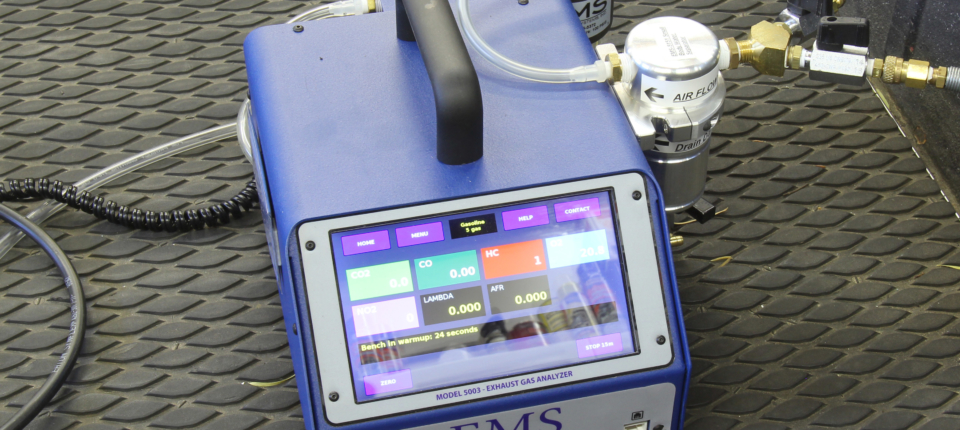
We mounted the EMS tester in the bed of the El Camino, connected the 12-volt power cable, and secured the tailpipe sniffer with a small chain through the frame. The EMS machine offers a wireless connection to our laptop where we could read the results in real time. There was roughly a three-second delay from when we would make a change to the EFI and the results would come up on screen.
Idle Test
Our first “victim” for our venture into five-gas tuning was Eric Rosendahl’s 468ci big-block ’66 El Camino. We had just completed a Holley Sniper EFI throttle body installation and we wanted to see what a mild change to the air-fuel ratio (AFR) would produce on our five-gas machine. After the engine warmed up and stabilized, we guessed that the default 13.7:1 commanded AFR would probably give us decent results and that leaning out the engine further might put it into lean misfire. On the other side of that theory, we felt that any AFR richer than 13.7:1 would increase the HC and CO and reduce the CO2. As you’ll see, our theory wasn’t even close.
In addition to the tester, EMS supplies three extremely useful tuning charts that indicate the desired levels for each of the five exhaust gas components. On the left is the idle tune chart. Note that the goal is to maximize CO2, minimize the CO and NOx while keeping the HC between 600 and 1,200 ppm. On the right is the peak horsepower chart with ranges indicating where the ideal numbers should fall. For example NOx numbers should be 800 to 1,000 ppm but not exceed 2,000.
Chart 1 shows our results. We compared 13.7:1 to 13.2:1 and were surprised by the EMS machine’s report. As you can see, commanding a half-ratio richer 13.2:1 AFR resulted in a 22-percent reduction in HC combined along with a slight gain in CO2 and a positive reduction in O2. Granted, the CO2 gain was minimal—but since higher CO2 means we improved combustion efficiency—any gain is good. The AFR numbers at the end of each report are the measured AFR from the 5-gas machine, while at the top of each chart is the AFR requested from the Sniper. As you can see, they are very close.
Timing Changes
Next we wanted to see how ignition timing would affect the engine. We measured the initial idle timing at 7-degrees BTDC. Normally, we prefer to put the timing around 12- to 16-degrees BTDC at idle, especially with engines with a performance camshaft. When we bumped the initial timing to 14-degrees BTDC, this had a negative effect on nearly all of the results.
The most important result is again the change in CO2, which lost nearly a full percentage-point when we added timing. Since CO2 is the gas that indicates improved combustion efficiency, in this engine it was clear that adding additional timing did not make this engine happy. Note that when we added timing, the HC numbers nearly doubled. Again, we’re not trying to reduce emissions as much as finding where the engine is most efficient. Adding timing affected the CO even though we didn’t make any AFR changes. This reinforces that 14-degrees initial timing was too much, as the AFR equivalent of 4.2-percent CO is 12.93:1.
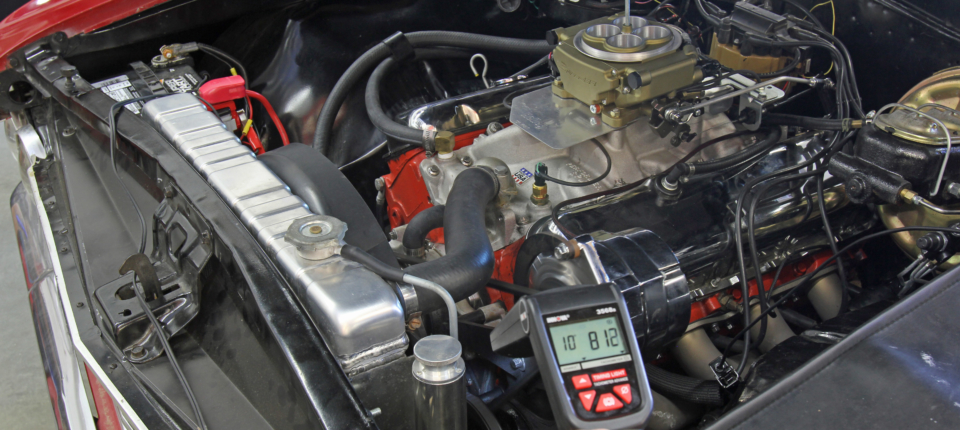
Beyond just fuel, you can use the five-gas analyzer to indicate where best timing should be by evaluating the results. For example, pulling just a couple of degrees of timing at part-throttle affected CO2, and revealed that the air-fuel ratio richened as indicated by higher CO.
All of these tests were performed at idle with no load on the engine. Before this test began, we put the 700-R4 transmission into gear (with 7-degrees initial timing) and the numbers improved slightly, which is good because the engine will spend much more time idling in gear than it will in neutral. As mentioned in Part I, NOx is an indication of load and that with the engine idling in gear that the NOx increased. With numbers this good, we may leave the timing at 7- or 8-degrees initial and instead concentrate on experimenting with both the vacuum and mechanical advance curves.
Cruise Results
We also performed a light-throttle highway cruise test with the engine at 2,200 rpm, converter locked, and the transmission in overdrive. The EMS machine is designed to run on automotive 12-volts, so we powered it with the cigarette lighter adapter and the machine was humming along nicely. The results are listed in Chart 3. Once we gained highway speed, the most interesting result was how the NOx numbers steadily climbed from roughly 230 ppm to where they stabilized at 450 ppm. This reveals the engine was making more heat.
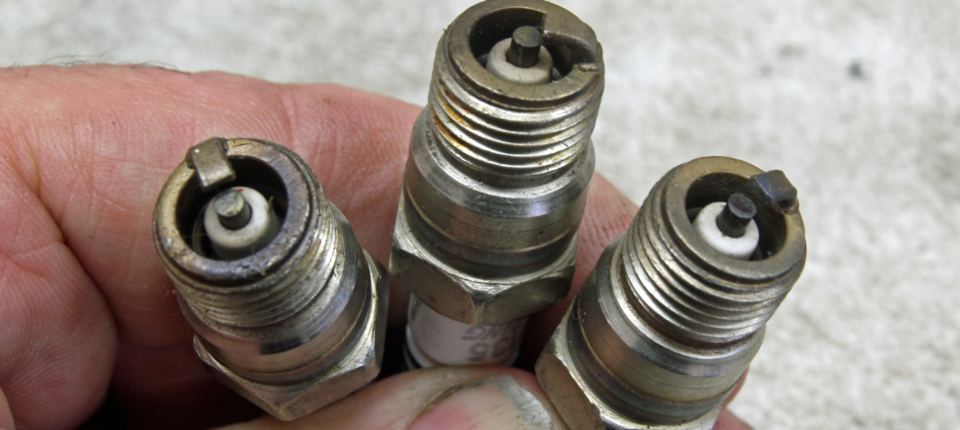
Five-gas engine tuner Dan Timm told us that he uses this combustion data to help tune spark plugs. Often, tuners will throw lots of fuel and timing at an engine and then run a very cold spark plug. With NOx feedback, Dan can run a warmer plug by removing fuel and still make good power.
At the same time, the HC numbers fell from an initial 550 ppm down to 380 ppm. The AFR target with the EFI was 14.0:1 but the EMS machine recorded a 13.5:1 AFR. This was our first shot at highway cruising so the Sniper EFI was probably still learning. Had we performed a second test with the car after the learning was completed, the Sniper AFR numbers would probably be closer to agreeing with our EMS tester.
Peak Torque
Any good tuner will tell you that AFR and timing adjustments are critical at peak torque because this is where the engine makes maximum cylinder pressure and temperature. This means the NOx numbers really become the most important. For peak torque adjustments, Brandes told us they’ve seen NOx become a critical feedback value with numbers around 1,000 to 1,100 ppm appear to be close to ideal. When the NOx climbs higher (1,500 ppm or more) this indicates excessive heat in the chamber that can quickly evolve into detonation and engine damage. Also, using this combustion feedback allows the tuner to dial the engine in much closer without risking engine damage since the NOx will indicate if the cylinder temperature is too high. The results are listed in Chart 4. This test was from an engine found on the engine dyno at Westech, and is based on wide-open-throttle testing. The previous material above was performed at part-throttle, and we wanted to be able to show you that the data captured is relevant at full throttle as well.
Conclusions
These are just a few data samples we’re retrieved from several different engines. One final piece of information that both Brandes and Dan Timm passed along, is that they’ve seen situations where higher-than-necessary octane use can produce high HC numbers. This is a result of a slower burning combustion process that produces high HC numbers (1,500 ppm or higher). By reducing the octane number (we’re speaking here in terms of R+M / 2 – or the AKI number), that the high HC numbers will drop and the engine will likely be happier – even if it does not make any more power.

This is a copy of the datalogging software developed by EMS. This may appear intimidating at first, but once you get used to using the software it’s a great tool. The five gases are displayed along the bottom with values called out based on positioning the red vertical line on the horizontal display.
The bottom line here is that using the five-gas analyzer as a tuning tool can produce a far more accurate tune that allows the engine to run more efficiently. The sooner this kind of technology is embraced by the tuning industry, it would appear that the learning process will accelerate even quicker and we will learn even more about all those secrets that still lie hidden in the combustion process.


